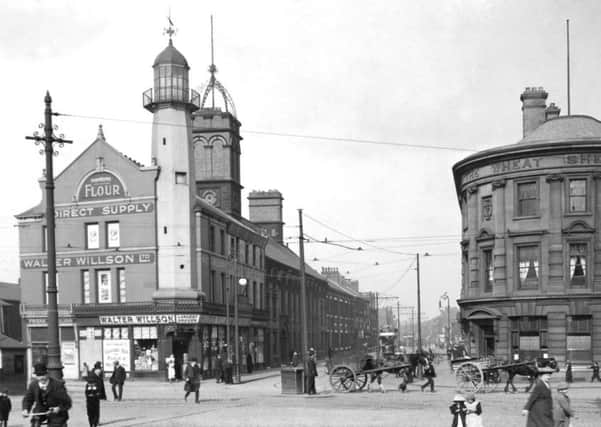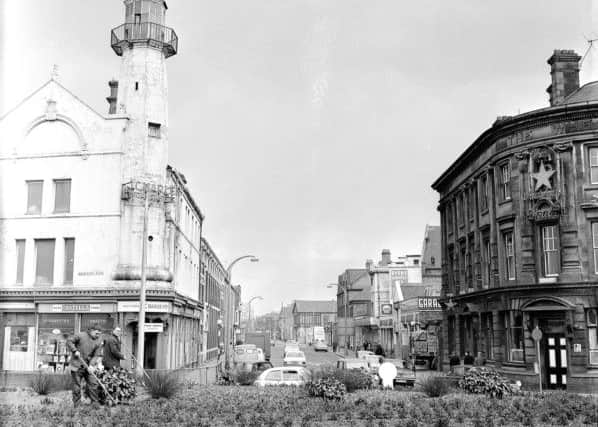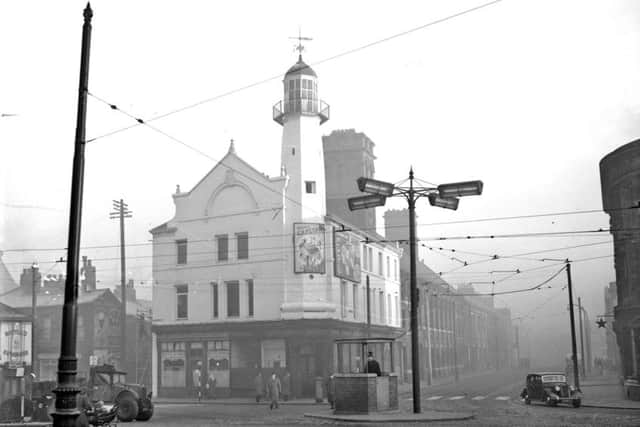Putting the spotlight back on a building with a sad demise


It stood on the Wheatsheaf corner which was at the west end of Roker Avenue.
It was built in the 1870s by a Mr Wills. He was a local businessman and shopkeeper who had come into a large inheritance.
Advertisement
Hide AdAdvertisement
Hide Ad

The story of Mr Wills and the premises he created is a story with a background - and one which even raised fears of the effects the building could have on shipping if it ever was lit up like a lighthouse.
Ironically, it was eventually lit up but not for another 100 years.
And that defining moment happened only when its best days had long since passed it by.
Thanks to our friends at the Sunderland Antiquarian Society, we can share the memories as well as plenty of history.
Advertisement
Hide AdAdvertisement
Hide Ad

Back in the 1870s, Mr Wills owned a grocery shop at the corner of St Marks and Chester Road.
And, with his new found wealth now available to him, he built premises in Roker Avenue before adding the lighthouse a little later.
Its design was loosely based upon the lighthouse that stood at the end of the old Pier during the latter half of the nineteenth century.
It would seem that Mr Wills intended lighting a lamp in his lighthouse.
Advertisement
Hide AdAdvertisement
Hide Ad

But this idea had to be abandoned when the port authorities vetoed it, saying that it would mislead shipping which was heading for the River Wear.
Even without the light, the building itself had plenty of facilities.
It boasted a large furnace on the third floor, as well as an old style lift and roomy cellars which apparently occasionally filled up with water which was believed to come from an underground spring.
Over the years, the shop premises beneath the lighthouse housed many businesses.
Advertisement
Hide AdAdvertisement
Hide Ad

In the early years of the twentieth century, it was occupied by the well known grocers, Walter Willson.
But perhaps the best remembered shop there was the confectioners, J.C. Marlee.
This shop was very popular with the pupils of the local Thomas Street School.
But like many good things, they often come to a sad end eventually. And so it was with the lighthouse building. By 1970, the property was derelict and had to make way in a Sunderland which was a place ripe for development.
Advertisement
Hide AdAdvertisement
Hide AdA plan was in place to demolish it to make way for a new road system.
But the best laid plans often come unstuck and that’s exactly what happened in this case - in quite ironic circumstances.
At 6.45pm on November 5, 1970, a fire broke out in the building.
It drew huge crowds to the scene and Roker Avenue and Newcastle Road were closed by police and traffic diverted.
Advertisement
Hide AdAdvertisement
Hide AdFlames leaped 100 feet high, and they spread across the rooftops of the adjoining properties.
West House, next door to the Miners’ Welfare Hall, was burnt down and firemen fought to prevent the blaze spreading to the Miners’ Hall.
The Wheat Sheaf Hotel and Byers Garage on the opposite side of Roker Avenue were in peril as intense heat built up.
Flames and sparks whipped through the air to add to the danger.
Advertisement
Hide AdAdvertisement
Hide AdWindows in the Wheat Sheaf Hotel cracked with the heat and firemen had to pump thousands of gallons of water onto the building.
The blaze was so intense, sixty firemen were needed to bring the fire under control.
Two hours after the start of the fire, and with only the shell of the building remaining, firemen attempted to pull the lighthouse down but this had to be abandoned.
Mr Douglas Laws, the Borough Engineer, and Mr J. Edwards, the Public Works Manager, were in attendance and arrangements were quickly put in place for the demolition.
Advertisement
Hide AdAdvertisement
Hide AdFloodlights from the PWD were played on the tower of the lighthouse which was at last lit up - for the first time in the 100 years since it had been built.
It was one of Sunderland’s most spectacular fires and ironically occurred on Bonfire Night.
Today, there is nothing left of the building which was once a landmark in the town.
Do you remember the Lighthouse Building and what are your memories of it.
Contact Chris Cordner by emailing [email protected]